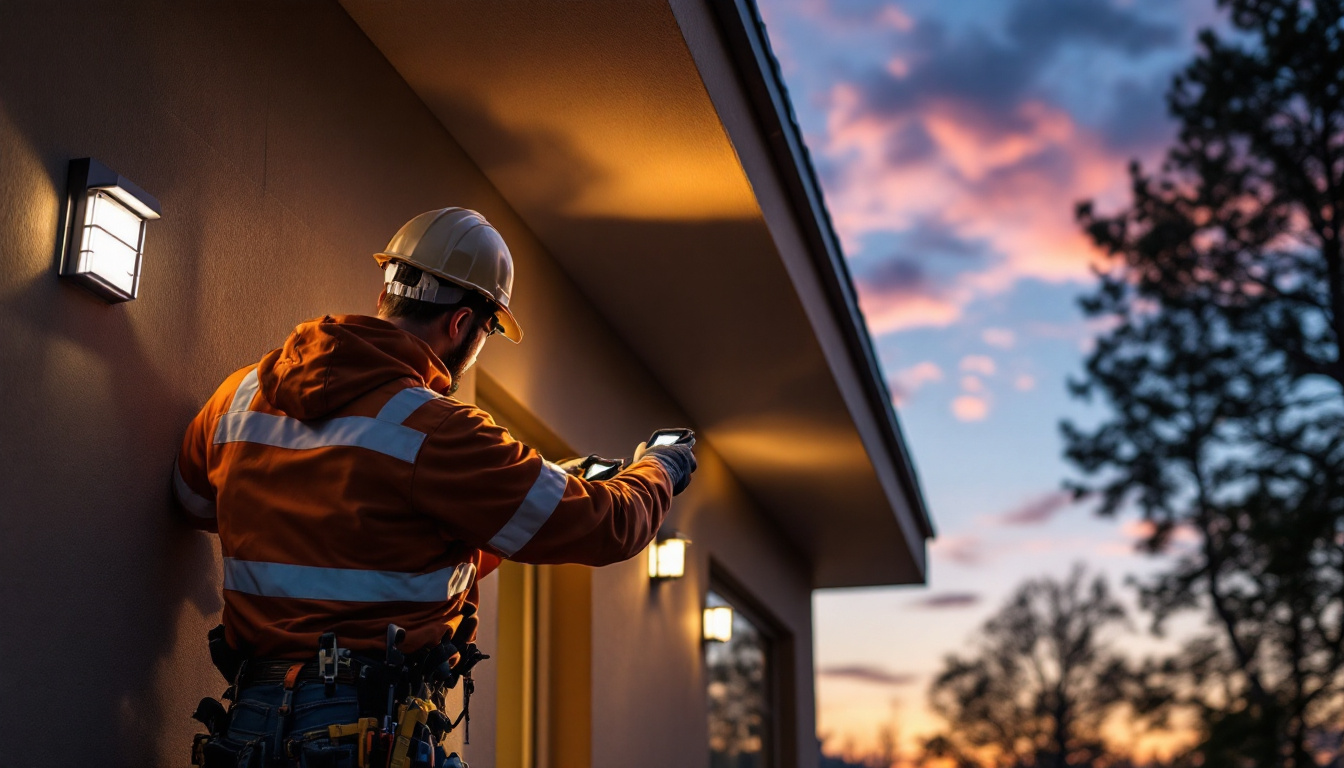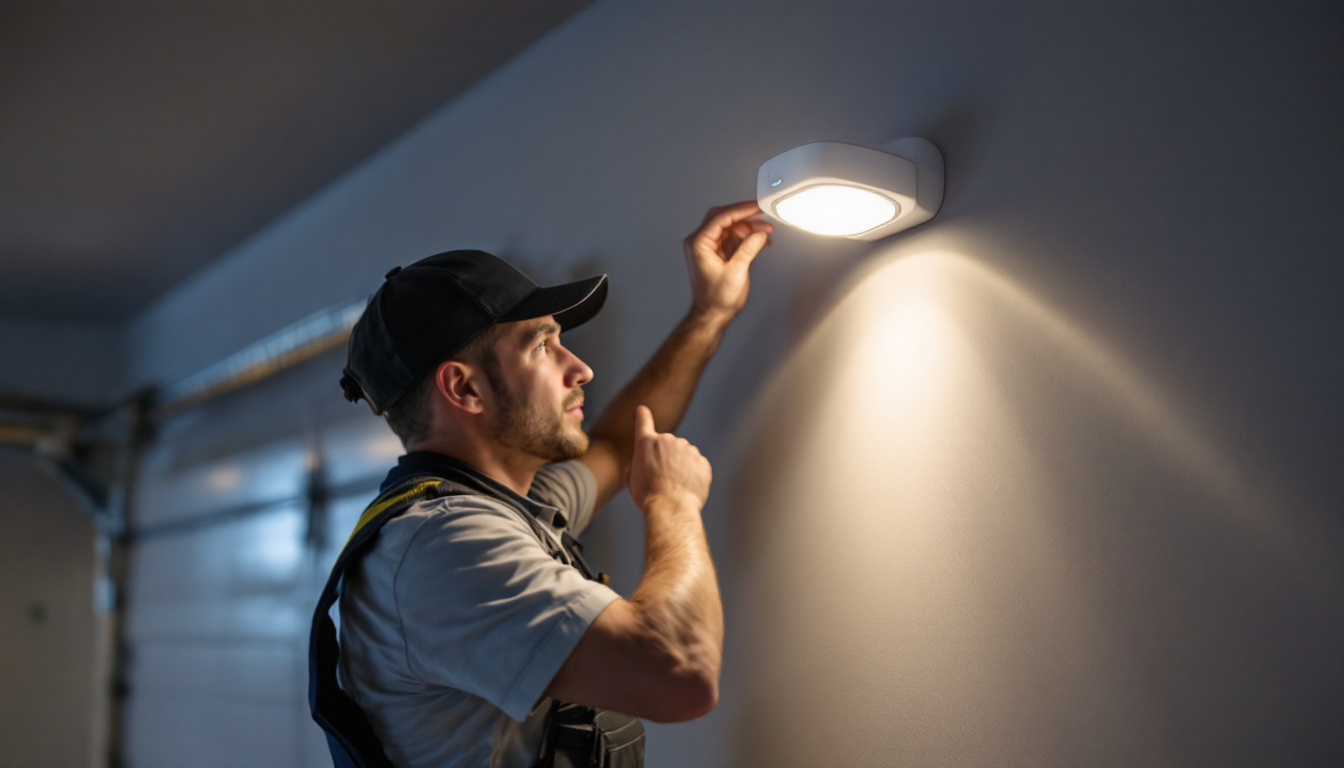

When it comes to installing exterior emergency lights, lighting contractors play a crucial role in ensuring safety and compliance. However, despite their expertise, common mistakes can lead to ineffective lighting solutions. This article delves into some of the frequent pitfalls that contractors encounter, offering insights on how to avoid them for a more successful project outcome.
One of the most critical aspects of exterior emergency lighting is its placement. Proper positioning ensures that the lights serve their intended purpose effectively, illuminating pathways and exits during emergencies. Without adequate lighting, individuals may struggle to navigate their surroundings, increasing the risk of accidents and injuries in high-stress situations.
Contractors sometimes overlook the specific layout of the property when determining where to install emergency lights. Each building has unique features, such as entrances, exits, and landscaping elements, that can affect visibility. Failing to consider these factors can lead to poorly lit areas, creating hazards instead of enhancing safety. For instance, a beautifully landscaped garden may have pathways that are obscured by foliage, making it essential to ensure that lighting is not only functional but also aesthetically integrated into the environment.
To avoid this mistake, it is essential to conduct a thorough assessment of the property. This includes identifying potential obstacles that could obstruct the light or create shadows. By mapping out the area and planning accordingly, contractors can ensure that emergency lights are strategically placed to maximize their effectiveness. Additionally, it is beneficial to consider the height and angle of the lights, as these factors can significantly influence the reach and spread of illumination. A well-thought-out lighting plan not only enhances safety but also contributes to the overall ambiance of the property.
Every region has specific codes and regulations governing emergency lighting. Ignoring these can lead to non-compliance, resulting in fines or the need for costly rework. Contractors must stay informed about local requirements, including the minimum illumination levels and specific locations where lights must be installed. Furthermore, understanding the rationale behind these regulations can help contractors appreciate the importance of compliance, as they are often designed to protect public safety and ensure that emergency responders can operate effectively.
To mitigate this risk, contractors should consult local building codes and, if necessary, engage with local authorities to clarify any uncertainties. This proactive approach not only ensures compliance but also enhances the contractor’s reputation as a knowledgeable professional. Additionally, keeping abreast of changes in regulations can provide contractors with a competitive edge, allowing them to offer clients the most current and effective solutions for emergency lighting needs. By fostering relationships with local regulatory bodies, contractors can also gain insights into best practices and emerging trends in safety standards, further enriching their expertise in the field.
The selection of appropriate lighting fixtures is another area where contractors often make mistakes. The type of emergency lights chosen can significantly impact their performance and reliability during an emergency.
Contractors may sometimes select lights based solely on their aesthetic appeal or initial cost, neglecting crucial factors such as light output and distribution. Emergency lights must provide adequate illumination to guide individuals safely out of a building. Choosing fixtures with insufficient lumen output can create dangerous situations.
To ensure optimal performance, contractors should evaluate the lumen output of various fixtures and consider the distribution pattern of the light. Using photometric data can help in selecting lights that will adequately illuminate the required areas, ensuring safety and compliance. Furthermore, understanding the specific layout of the space is essential; for instance, a long corridor may require different lighting solutions compared to an open area. By taking into account the unique characteristics of each environment, contractors can create a more effective lighting strategy that enhances visibility and safety during emergencies.
Another common oversight is not considering the battery backup capabilities of emergency lights. In the event of a power outage, the reliability of battery-operated lights is paramount. Contractors must ensure that the chosen fixtures have sufficient battery life to last through an emergency situation.
Additionally, it’s important to consider the lifespan of the lighting fixtures themselves. Investing in high-quality, durable lights may have a higher upfront cost but can save money in the long run by reducing the need for frequent replacements. Contractors should weigh the pros and cons of different products to make informed decisions that prioritize safety and longevity. Moreover, regular maintenance checks are crucial; even the best emergency lights can fail if not properly maintained. Implementing a routine inspection schedule can help identify any potential issues before they become critical, ensuring that all emergency lights are functioning optimally when they are needed most. This proactive approach not only enhances safety but also instills confidence in the building’s emergency preparedness measures, reassuring occupants that their safety is a top priority.
Proper installation techniques are vital for ensuring that emergency lights function as intended. Mistakes made during installation can lead to malfunctioning lights or even safety hazards.
One of the most critical aspects of installation is ensuring that wiring and connections are secure and compliant with electrical codes. Poorly executed wiring can lead to flickering lights, complete failures, or even electrical hazards. Contractors must pay close attention to the quality of their work during this phase.
To prevent issues, it is advisable to follow best practices for electrical installations. This includes using the correct gauge of wire, ensuring all connections are tight, and properly securing fixtures. Additionally, conducting thorough testing after installation can help identify any potential issues before the lights are needed in an emergency.
Contractors often focus on the installation process and may overlook the importance of maintenance considerations. Emergency lights require regular testing and maintenance to ensure they function correctly when needed. Failing to communicate this to clients can lead to neglected systems that may not perform during an emergency.
To address this, contractors should provide clients with clear guidelines on maintenance schedules and procedures. This includes recommendations for regular testing, battery replacements, and cleaning of fixtures. By emphasizing the importance of ongoing maintenance, contractors can help ensure that emergency lighting systems remain reliable over time.
exterior emergency lights should not be viewed in isolation; they must be integrated with other safety systems for maximum effectiveness. This integration can often be a source of mistakes for contractors.
Emergency lights should work in tandem with alarm and notification systems to provide a comprehensive safety solution. Contractors may overlook the need for coordination between these systems, leading to disjointed responses during emergencies.
To avoid this mistake, contractors should collaborate with other professionals involved in the project, such as fire alarm technicians. This teamwork ensures that emergency lights activate simultaneously with alarms, providing clear guidance to occupants during an emergency.
In addition to lighting, proper signage is crucial for guiding individuals to safety. Contractors sometimes neglect to consider how signage complements emergency lighting. Without clear signage, even the best lighting solutions can be ineffective.
To enhance safety, contractors should recommend the installation of illuminated exit signs and directional signs in conjunction with emergency lights. This combination provides a clear path for individuals to follow during an emergency, reducing confusion and panic.
Education is an essential component of ensuring that emergency lighting systems are effective. Contractors often underestimate the importance of informing clients about the systems they are installing.
Clients may not fully understand how to operate or maintain emergency lighting systems. Contractors should provide comprehensive training that covers the functionality of the lights, maintenance requirements, and emergency procedures. This education empowers clients to take an active role in ensuring the effectiveness of their emergency lighting.
Additionally, contractors should offer written materials that clients can refer to later. These resources can serve as a valuable reminder of best practices and maintenance schedules, helping to reinforce the training provided.
Another critical aspect of client education is encouraging regular drills and testing of emergency lighting systems. Contractors should stress the importance of conducting drills to familiarize occupants with emergency procedures and the role of lighting in those procedures. Regular testing ensures that the systems are functioning correctly and can help identify any issues before they become critical.
By fostering a culture of preparedness, contractors can help clients create a safer environment for all occupants. This proactive approach not only enhances safety but also builds trust and credibility between contractors and their clients.
Exterior emergency lighting is a vital component of building safety, and lighting contractors play a significant role in its effectiveness. By understanding and avoiding common mistakes related to placement, selection, installation, integration, and education, contractors can enhance the safety and reliability of emergency lighting systems.
Ultimately, the goal is to create a safe environment for all occupants. By prioritizing these considerations, contractors can ensure that their installations not only meet regulatory standards but also provide peace of mind in emergency situations. A commitment to excellence in emergency lighting will lead to satisfied clients and a strong reputation in the industry.
Don’t let common mistakes compromise your emergency lighting installations. Choose LumenWholesale for your lighting needs and benefit from our top-quality, spec-grade lighting products at unbeatable wholesale prices. Our extensive selection is designed to meet the highest industry standards, ensuring you get reliable, high-performance lighting for every project. With free shipping on bulk orders, you can equip your projects with premium lighting at the best value — all without hidden fees or compromises. Elevate your lighting solutions today and experience the perfect blend of quality, affordability, and convenience. Visit Wholesale Lighting at the Best Value and make the smart choice for your emergency lighting needs.

Discover essential tips for outdoor walkway lighting to enhance safety and aesthetics without breaking the bank.

Discover the key elements of cafe lighting that every contractor should know.

Discover the latest trends in garage motion lighting that every lighting contractor should be aware of.

Discover how industrial dining lights can transform your space with their unique blend of style and functionality.
Get notified when NEW deals are released.
Optimize your budget with wholesale discounts.
Only top-quality, specification-grade lighting products.
No additional costs at checkout - what you see is what you pay.
We understand the unique needs of contractors.